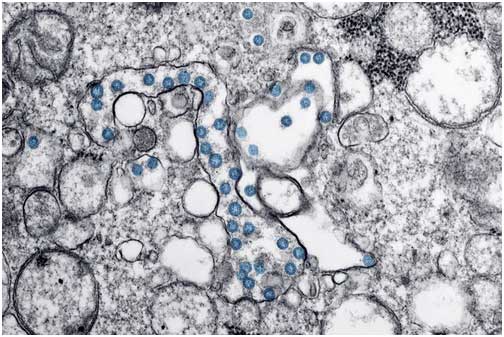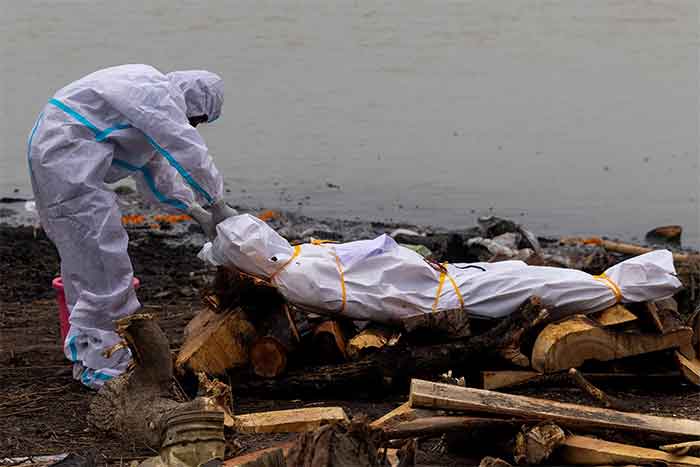
Contrary to the common belief that Government of Bangladesh has been least prepared and that its responses to COVID-19 have been ad hoc and impulsive, it is important to note that the government did have an elaborate plan, ‘National Preparedness and Response Plan for COVID – 19’ and that the Plan was prepared under the guidance of the Directorate General of Health, Government of Bangladesh, in March 2020. For some unexplained reasons, the Plan apparently was never made public.
The Plan envisages four levels of COVID-19 responses: Level 1 is when ‘no cases is detected in the country’ and this relates to pre-COVID-19 preparedness; Level 2 is when ‘imported cases and limited human-human transmission’ has occurred and this relates to actions concerning returned Bangladeshi expatriates; Level 3 is when there is a ‘cluster of cases’ which relates to actions aimed at ‘containment’ of the virus; and finally, Level 4 — the highest level — is the stage of ‘community transmission’ and “mitigation” actions.
Like most plans, test of their utility is not in their textual beauty but in implementation and this is where Bangladesh government may have faltered quite badly. For example, instead of utilizing the Level 1 Response period – ‘no cases are detected in the country’ – in preparing for what might be needed for Levels 2-4, government, especially some of its ministers used this time to engage in mindless bravados and denials. As a result, when the problem struck, actions on Levels 2-4 fell by the wayside. For example, due to neglect of Level 1 preparatory actions, government’s Level 2 responses relating to ‘imported cases and limited human-human transmission’ ended in complete fiasco. Similarly, Level 3 responses – ‘containment’ of the virus that included among other things, testing and sending people in social isolation also experienced similar chaos.
Testing is key to containment of COVID-19 and yet the level of preparedness for testing – supply of testing equipment and other related logistics etc. – have been far from ideal, if not dismal resulting in pitifully low rate of testing. Bangladesh’s current rate of testing rate, 10 per million, is the “lowest in the world” which, to say the least is deeply worrying.
These foul-ups only reveal government’s ineptness in implementing its own plan.
With these failures under its sleeves and now that the country is marching fast towards Level 4, the highest level, the stage when infection reaches the community and multiplies and causes deaths exponentially and also given that Bangladesh’s below par preparedness and its inefficient and inadequate public health system is poorly equipped to deal with the challenge, there are estimates that anything between half a million to a staggering 2 million may die of COVID-19. Admitted that these estimates that have been based on mathematical modelling are highly speculative and may or may not come true, it is important that the government do factor in these projections in the formulation of its COVID-19 Plan especially that these projections have been made by credible international institutions.
However, good news is that various statements and newspaper reports indicate that the government is fully aware of the gravity of the situation and is doing all it can but it is also apparent that more needs to be done and that some of its actions have resulted in more miseries than relief.
Responses to COVID-19 requires actions at multiple levels. What would work for the rich would not work for the poor. For example, restrictions in movements or home isolations did work for the rich especially in the cities and in fact some of them are treating it as a holiday, indulging themselves in picnic like activities at their respective homes. On the other hand, poor especially those who earn by the day and live by the day are not so fortunate. To them, social isolation is virtual death warrants and yet, when out of desperation some of them ventured out in search of work, were humiliated by the law enforcement agencies and by the self-styled volunteers.
Lately, prompted by the directive of the chief of the Ready-Made Garment (RMG) factory owners who by defying government ruling on social isolation asked the workers to come to Dhaka to get their wages only to be told to go back, hundreds walked miles and reached Dhaka and hundreds got caught in between, stranded on highways. This is yet another example of monumental and a tragic lapse in policy coordination.
Government must find some creative and organized ways to solve the problem of the disadvantaged people which are unique.
What may also be needed on an urgent basis is to give clear instructions to all agencies – both government and non-government and the charities, both institutional and private, not just what they must or can do but also what they must NOT.
Furthermore, given Bangladesh’s limited resources and its less than ideal institutions, and also the fact that those who are at the forefront of implementation of government policies, namely the bureaucrats, party workers, self-proclaimed volunteers and dis-interested well-wishers who either employ bullying as preferred tactic to impose social distancing or dole out food to the poor and use the crisis as a public relations opportunity do precious little to alleviate. These guys must be restrained and at the same time, it may also be helpful for the government to look for alternative institutions that are competent, adept at handling crisis and are trusted by people, those that can implement its Plan objectively, stringently and most importantly, sensitively.
COVID-19’s challenges are not limited to health; its economic fallouts are expected to be huge and prolonged and worldwide. Indeed, its economic fallout in Bangladesh is huge. While some sort-term measures are needed to tide over some of the immediate challenges of loss of businesses and jobs, strategic thinking and innovative policies are needed to respond to the significant shifts and changes that are imminent in the global market, in the coming days.
Bangladesh’s current economic architecture which has served it well for the last three decades or so may prove to be not so relevant anymore to the post COVID-19 evolving global economic scenario and therefore, there is an urgent need to think proactively and make changes early so that adjustments can be made in time, keeping in mind that like most crisis COVID-19 would certainly destroy some of existing arrangements, but would also create few new opportunities. Bangladesh would do well to put its best brains together to identify these new opportunities and tap onto these, the earliest.
In the backdrop of the above and given the complexities of the problem, the question that must be asked is, can Bangladesh do it – can it reverse its chaotic beginning to a good end?
I believe Bangladesh can and in this regard, I echo claims of many in the government and outside that if Bangladeshis were able to fight a difficult war of independence and win, it can also win its fight against COVID-19, just that it needs to remind itself of couple of important issues and these are that in the 1971 war of liberation, no casualties were big enough whereas in the COVID-19 fight, minimisation of casualties is the most important goal and secondly, and this is key, which is that the war of liberation was fought by all and not by a particular group or a section of people and that this has been its core strength.
In sum, coronavirus would cause many shifts and changes in the coming days. Only countries with strong public institutions, strong public wellbeing oriented policies where resources and science have the capacity to respond to the needs of people and not profit and more importantly, where leaderships promote inclusion and think strategically and not opportunistically and are socially conscious, only they and not others would come to the top and that such countries are not gifts of god but are creations of citizens.
Finally, a piece of advice to us all, home and abroad.
COVID-19 has put us all, at home and abroad, rich and poor onto a Titanic – the journey is going to be long, arduous and hazardous. Everyone, both within and across nations, rich and poor, government and non-government organizations and the rival political parties etc. etc. are all on the same ship, travelling together. Therefore, we must plan and act inclusively and share responsibilities and navigate our way out of the hazard, together, for if we don’t and instead, behave callously, divisively and selfishly, we all would go down with the difference that some of us may be travelling on the upper deck, in the first class!
The author is Professor of Development Practice, School of Social Science, University of Queensland, Australia and former Senior Policy Manager of the United Nations.
SIGN UP FOR COUNTERCURRENTS DAILY NEWS LETTER

















































